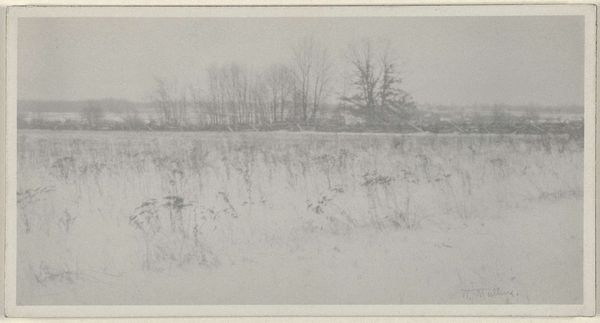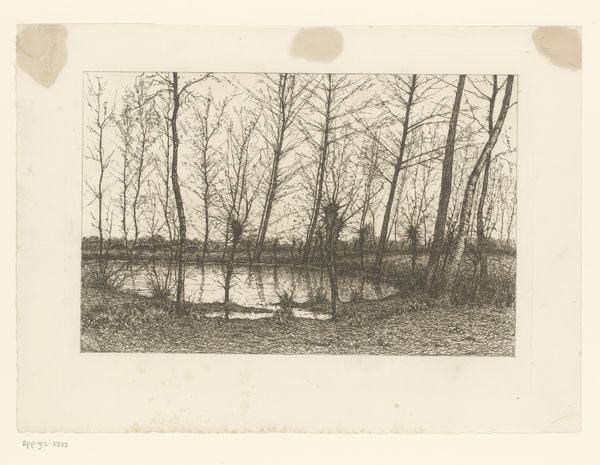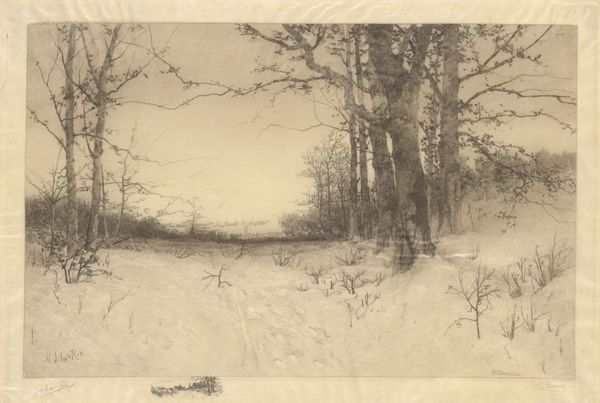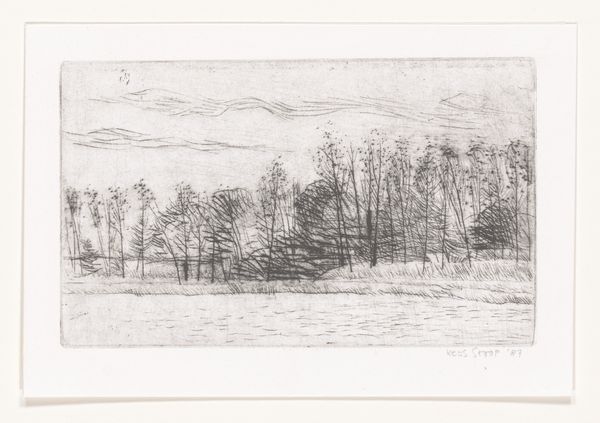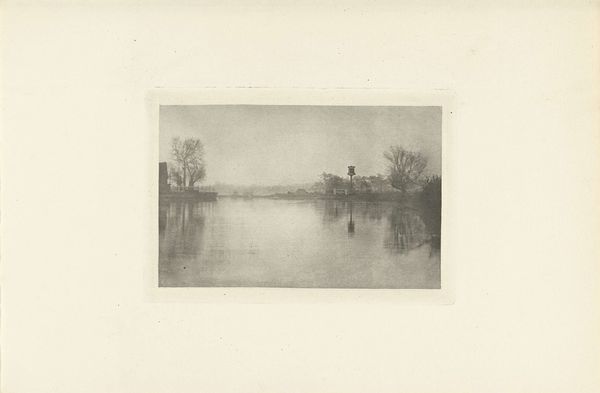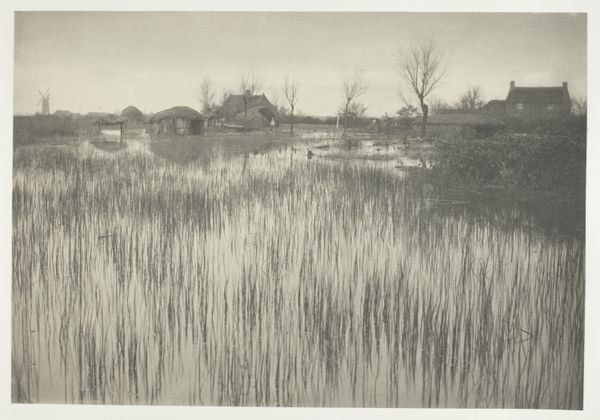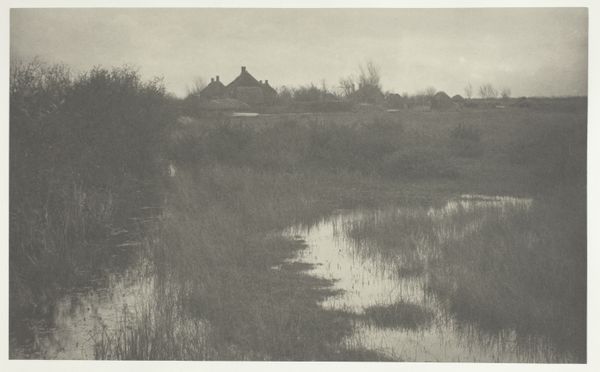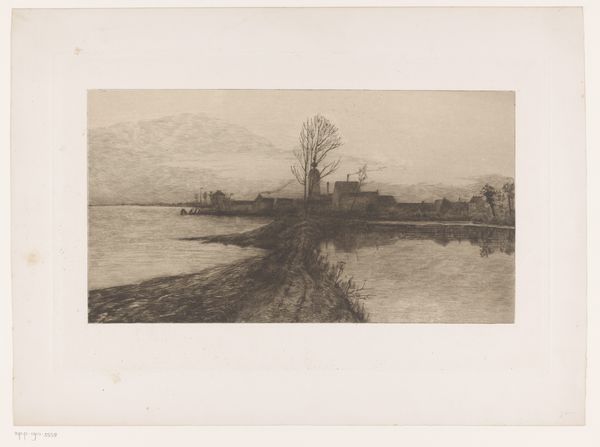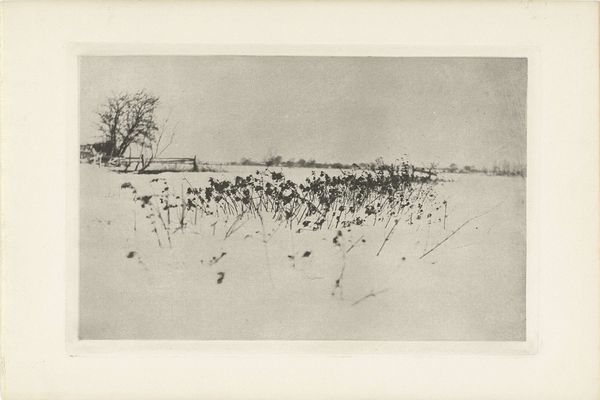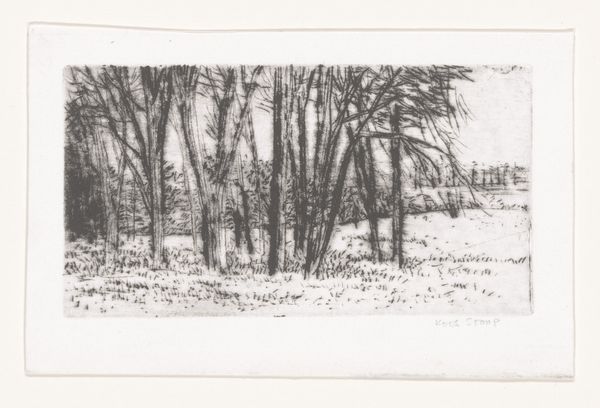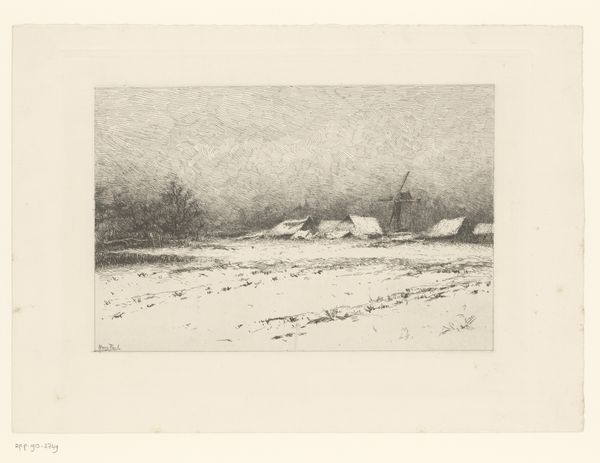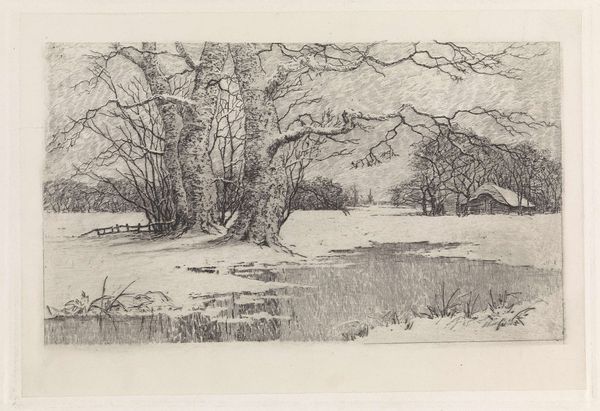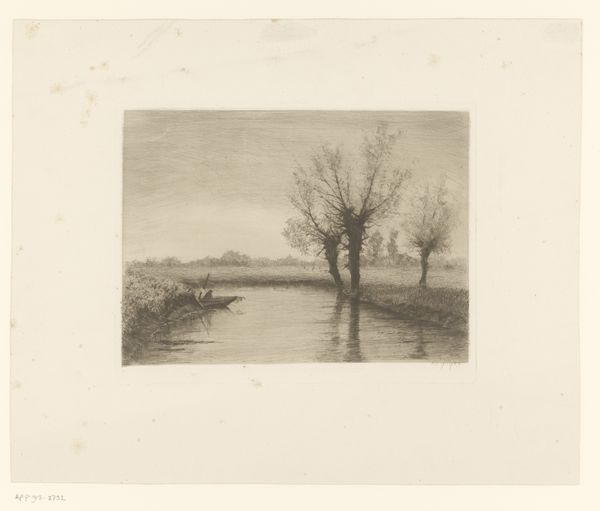
Dimensions: height 113 mm, width 200 mm, height 144 mm, width 266 mm
Copyright: Rijks Museum: Open Domain
Curator: Upon initial viewing, what strikes me most is the quiet stillness that the artist, Peter Henry Emerson, captures in "Sneeuwlandschap", a gelatin-silver print made sometime between 1890 and 1895. Editor: It really does evoke a particular feeling, a somber sort of peace that I often feel during the colder months. It reminds me how class and gender greatly impacts lived experience, since winter hits the impoverished so hard, stripping them of what little they have, safety, and sometimes even community, as their homes disintegrate in the landscape due to neglect and limited social resources. Curator: Well, Emerson, being a key figure in Pictorialism, would likely appreciate your feeling oriented toward personal expression, a key value of the movement, even if perhaps not expressed precisely in those activist terms. The process was manipulated in development. We should ask, how does that pursuit affect our understanding of what the photograph “documents?” Editor: Absolutely! Considering that many Pictorialists worked to counter ideas about art and craft, seeing photography elevated to the fine arts provided visibility to marginalized communities that sought representation to counter predominant oppressive norms. Curator: Right, it’s vital to understand Pictorialism emerging from the late 19th century Photo-Secession movement in America. It’s not only an attempt to establish photography as an art form. Note, for example, how he frames this snowy landscape scene in a manner clearly inspired by Impressionist landscape painting. This demonstrates, photographically, something we now take as normal but that, in that era, constituted a statement of cultural and artistic values. Editor: So, how might such an approach serve social reform? How did this type of visual narrative shift cultural ideologies towards human liberation in late nineteenth century landscapes and urban contexts? Emerson uses his photography in pursuit of an artistic vision, though the context could invite important discussions about wealth, access and environmental inequality at that moment. It opens a space to think more critically. Curator: I completely agree! It’s essential we don’t look at historical artwork in isolation. Considering broader issues relating to representation, agency and enfranchisement allows us to engage more fully and deeply. Editor: Absolutely! Thank you for lending your invaluable insights, helping us create meaning beyond initial perspectives.
Comments
No comments
Be the first to comment and join the conversation on the ultimate creative platform.
